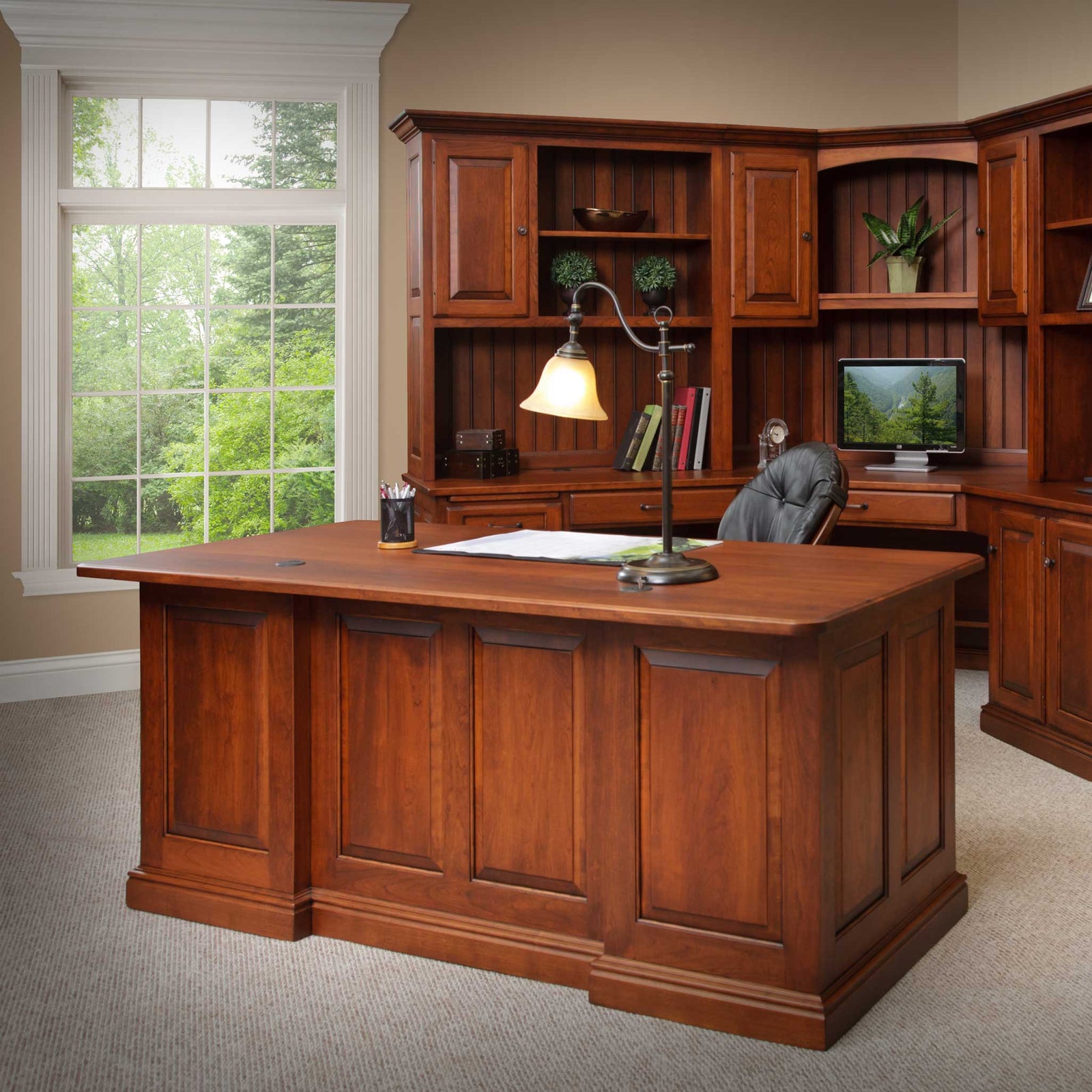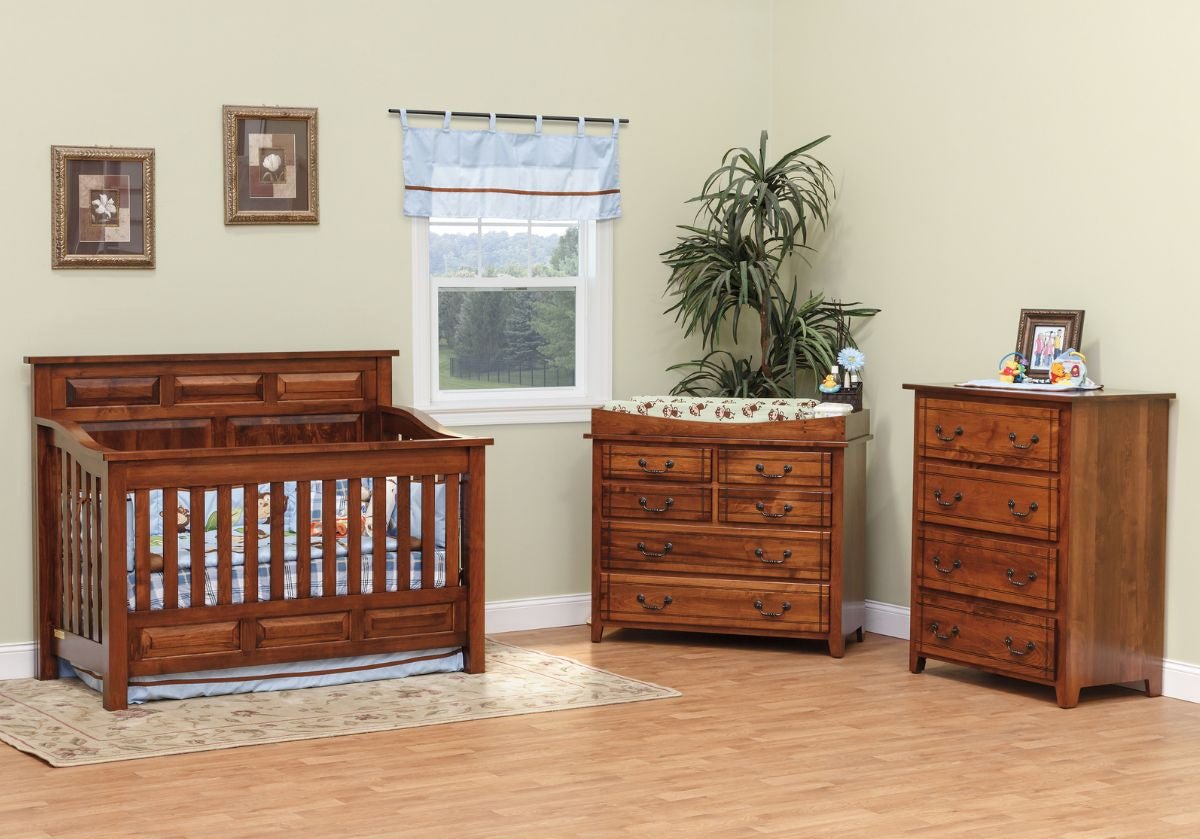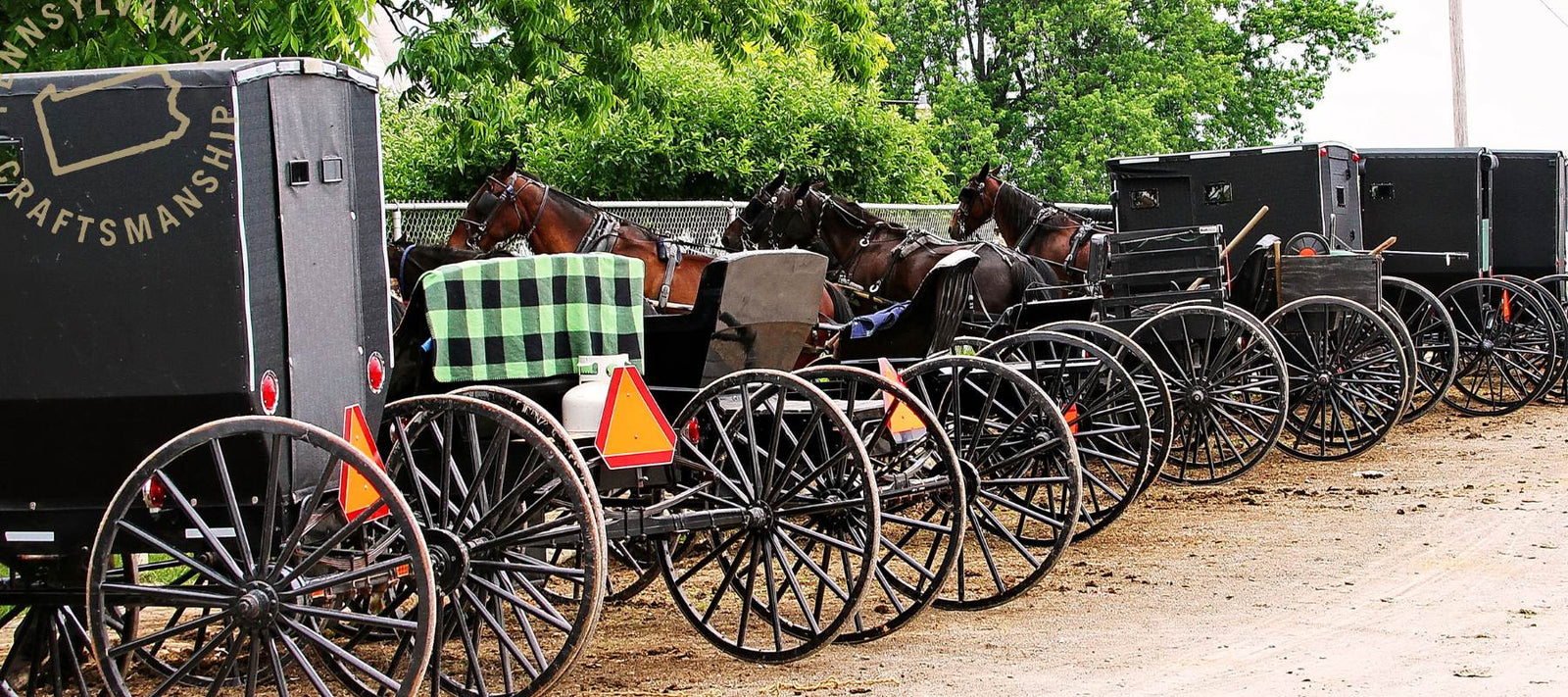When it comes to investing in quality furniture, Amish-made pieces stand out as a testament to traditional woodworking excellence. But have you ever wondered, "How much is Amish furniture?" We’ve done the research for you. Let’s explore the factors that contribute to the cost and why investing in authenticAmish polywood furniture is a smart choice for your home.
How Much Does Amish Furniture Cost?
Amish furniture offers exceptional craftsmanship, but its cost can vary depending on several factors like materials, craftsmanship, and customization options. Let’s take a closer look at the different pricing tiers and types of Amish furniture available.
Dining Room Furniture
Tables: $1,000–$10,000
Amish dining tables likerectangular kitchen tables orround pedestal dining tables can range from $1,000 to $10,000, with some high-end models costing even more. The price points depend on the specific wood type, size, and intricate design details you pick. Most people want a table that fits their budget but still offers durability and a timeless look, so it’s not just a piece of furniture — it’s something that lasts and always looks good.
Chairs: $300–$1300 Each
Amishwood dining chairs typically cost $300 to $1,300 per chair, and fully upholstered options may exceed that. If you want to purchase a complete dining set, it involves multiplying the per-chair price by the number of chairs you want. Buying a complete set might be more economical for you as most brands tend to offer deals for full sets.
Bedroom Furniture
Beds: $600–$15,000
Amish bed frames typically range from $600 to $15,000. Multifunctional beds likeking-size platform beds with storage will cost you more. Premium collections with some specialty designs can approach $15,000 based on the materials and customizations you want.
While the price may seem high, you’re investing in high-quality, handcrafted furniture built to last for generations. This gives you great long-term value.
Dressers and Nightstands: $600–$5,000
Amishsolid wood dressers average between $300 and $5,000. Bespoke wooden chests might cost you more, but it’ll be a unique statement piece in your bedroom that you can pass down through generations.
Solid wood nightstands are usually priced from $600 to $4,000. Total bedroom furniture investments typically range from $600 to $6,000-plus, depending on the piece you select and the wood quality.
Living Room Furniture
Sofas: $3,000–$6,000
HandcraftedAmish sofas represent significant investments in quality seating. Skilled Amish craftsmen build the sofas, using solid wood construction, precise joinery, and customizable fabric or leather options.
When you buy, you’re getting a sofa built to last, with options to match your style and comfort needs. Plus, the timeless craftsmanship means it’ll stay in great condition for years.
Coffee Tables and End Tables: $600–$4,000
Occasional tables vary in price:solid wood end tables range from $350 to $4,000,wooden coffee tables from $600 to $400, andsofa tables from $300 to $4,000. The size you choose, wood selection, and design complexity influence final pricing.
These high-quality pieces can be a standout centerpiece in your living room for decades to come.
Custom or Specialty Pieces
If you want unique or highly customized Amish furniture pieces, it can significantly exceed standard price ranges. Factors like rare wood selections likequarter sawn white oak, intricate carving, and complex design requirements directly impact the overall cost.
Factors That Affect the Price of Amish Furniture
Amish furniture pricing reflects the combination of material quality, craftsmanship, and customization. Let’s look at the factors that come together to determine the final cost of these beautiful pieces.
1. Material Selection
The type of wood you choose plays a significant role in the price. Each wood type brings its unique features that affect the overall value of your furniture.
Rustic woods often cost less because they include natural imperfections and require less work from the craftsmen. However, exotic woods or rare finishes can push prices up. Rare materials like walnut or specialty grain-matched selections can increase your costs.
Here’s a quick summary:
|
Wood Type |
Price Range |
Characteristics |
|---|---|---|
|
Red Oak |
Lowest |
Durable baseline option |
|
Brown Maple |
Low-moderate |
Smooth grain pattern |
|
Rustic Cherry |
Moderate |
Natural character |
|
Cherry |
Higher |
Premium aesthetic |
|
Hickory |
Higher |
Exceptional strength |
|
Quartersawn White Oak |
Premium |
Unique grain presentation |
2. Craftsmanship and Construction
Creating Amish furniture is time-intensive. Skilled Amish artisans spend 20-40 hours on each piece, carefully crafting every detail. Traditional techniques such as mortise-and-tenon joints (a technique where one piece fits precisely into another without nails or screws) add durability and require precision. These labor-intensive methods contribute to a higher price due to the time and skill involved.
3. Customization Options
Personalizing your furniture, whether through tailored dimensions, finishes, or design elements, increases the price. Custom options can raise the cost by 15%-25% compared to standard models.If you want hand-carved details, specialized inlays, or intricate patterns, these features add complexity and increase the price.
4. Delivery and Shipping Costs
Furniture delivery can be expensive, and the size and weight of your furniture can increase shipping costs. Larger pieces like dining tables or bedroom sets often require specialized transportation, adding 10%-20% to the purchase price. But many stores offer seasonal deals or discounts on delivery fees. For example,Snyder's Furniture offers free delivery on your first order.
Why Amish Furniture Is Worth the Cost
Amish furniture is a very smart investment that you can make in quality and durability. While it may cost you more upfront, the exceptional craftsmanship and lasting value make it worth every penny. Here's why:
Exceptional Quality
Amish artisans craft furniture using time-tested techniques that ensure strength and longevity. They craft each piece from solid hardwoods likeoak and maple and cherry, and they can last 30-50 years. Traditional joinery methods, such as dovetail joints and mortise-and-tenon connections, provide superior strength, outlasting modern manufacturing methods.
Timeless Designs
Skilled artisans design Amish furniture to withstand changing trends. Its classic, minimalist styles fit seamlessly into any interior design. This makes sure it remains relevant and complementary to your home for decades.
You’ll find that these pieces not only stand the test of time in terms of durability but also in style. They can become cherished items that you pass down and admire over the years.
Environmentally Friendly Practices
Amish woodworkers prioritize sustainability by sourcing lumber from responsibly managed forests and using natural, low-VOC finishes. Local wood procurement reduces transportation emissions, and their eco-conscious production methods support American forestry and woodworking communities.
Tips for Finding Affordable Amish Furniture
Finding affordable Amish furniture is possible with a little strategy, smart shopping, and knowingwhere to buy Amish furniture. Here are some tips to help you save while still getting the high-quality craftsmanship Amish furniture is known for.
1. Look for Sales and Discounts
Timing is everything when it comes to saving on Amish furniture. These sales often offer significant discounts, so be sure to sign up for manufacturer newsletters to get early notifications and exclusive deals.
Keep an eye out for seasonal sales during:
-
Holiday weekends like Memorial Day and Labor Day
-
End-of-year clearance events
-
Winter furniture sales
-
Showroom inventory clearances
2. Consider Purchasing Sets for Better Value
Buying furniture sets instead of individual pieces is a smart way to save. For example:
-
Dining room sets can save you money compared to buying individual chairs and tables.
-
Solid wood bedroom sets often offer package discounts.
-
Matching living room sets reduce your overall investment.
3. Choose Standard Designs Over Extensive Customization
Opting for standard designs instead of custom features can help you lower the cost. Standard designs typically cost less and still offer the same quality craftsmanship, so you can enjoy beautiful Amish furniture at a more affordable price.
Try these cost-saving strategies:
-
Go with standard wood finishes like oak or maple, rather than exotic options.
-
Pick basic design configurations over intricate detailing.
-
Stick to standard sizes instead of custom dimensions.
Frequently Asked Questions
Is Amish furniture worth the price?
Yes, Amish furniture is worth the price due to its exceptional craftsmanship, durability, and timeless design that make it a long-term investment.
Why is Amish furniture more expensive than regular furniture?
Amish furniture is more expensive due to the high-quality materials, time-intensive handcrafting techniques, and traditional woodworking methods that ensure superior durability and design.
How long does Amish furniture typically last?
Amish furniture typically lasts 30-50 years with proper care, as it's made from solid hardwoods and constructed using traditional joinery methods.
What factors influence the price of Amish furniture?
Factors such as wood type, craftsmanship complexity, customization, size, and delivery or shipping costs influence the price of Amish furniture.
Are Amish furniture pieces environmentally friendly?
Yes, Amish furniture is eco-friendly as it uses sustainable wood sourcing, non-toxic finishes, and traditional manufacturing processes that minimize environmental impact.
Can I customize Amish furniture to fit my style?
Yes, Amish furniture offers extensive customization options, allowing you to select wood types, finishes, sizes, and design features to match your style.
How do I care for and maintain Amish furniture?
Care for Amish furniture by dusting regularly, using wood-specific cleaners, protecting it from direct sunlight, and applying furniture wax or oil to maintain its beauty.
Where is most Amish furniture manufactured?
Most Amish furniture comes from traditional woodworking communities in Ohio, Pennsylvania, and Indiana, where skilled artisans have passed down techniques for generations.














Leave a comment (all fields required)